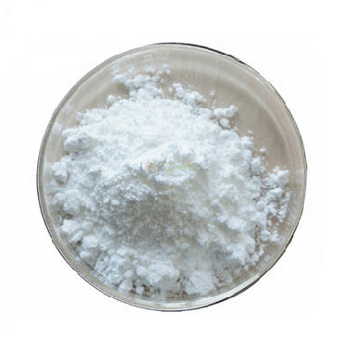Synthesizing Lithium Titanate for the use in Lithium titanate battery
Lithium titanate (Li4Ti5O12) is a type of lithium-titanium composite oxide with a spinel structure. It has the advantages of cheap availability, safe and reliable, simple preparation process, low cost, good cycle performance, high chemical stability, low hygroscopicity under full charging state, and strong thermal stability.

It can be used in the stable voltage range of most liquid electrolytes , Commonly used in lithium-ion batteries, asymmetric supercapacitors and all-solid-state lithium-ion batteries, can be described as a multi-functional material. Li4Ti5O12, as a negative electrode material for batteries, has the advantages of better safety, longer service life and higher reliability than carbon materials such as graphite. Therefore, it has great value and wide application in electrochemical devices, especially in energy storage batteries and supercapacitors.
Application
1. Application in lithium ion battery
When Li4Ti5O12 is used as a positive electrode, it can only form a battery with metal lithium or lithium alloy, so it cannot provide a lithium source; when used as a negative electrode, the battery voltage is 2.2V or 3.2V, and a variety of materials such as LiMn2O4, LiCoO2, etc. (4V) or Mn5O4, LiNiO15, etc. (5V).
2. Application in asymmetric supercapacitors
Supercapacitors can be divided into symmetrical and asymmetrical types according to the structure and the reactions occurring on the electrodes. The asymmetric supercapacitor electrode includes nano-sized Li4Ti5O12, which has a longer cycle life, lower electrode potential, larger capacity, and high energy density.
Electrochemical property
Theoretically, the capacity of Li4Ti5O12 mainly depends on the number of octahedral voids that can accept Li+. The electrochemical property can be related to the set voltage: when the voltage is 2.0-0.5V and 2.00-0.01V, it can be reversible respectively. Embedding 1molLi+ and 1.5molLi+, the voltage platform is 1.55V and 1.55V and 0.55V respectively, and the theoretical specific capacity is 175mAh/g and 220mAh/g. The actual cycle specific capacity of Li4Ti5O12 is 150.00-160.00mAh/g. Before and after inlaying, the lattice constant a changes from 0.836nm to 0.837nm, the cell volume change is very small (calculated value <0.3%), so it is often referred to as "zero strain" electrode material, and the cyclic structure of the skeleton structure is stable It makes it possible to avoid damage caused by the expansion and contraction of the electrode material during the early charge and discharge cycle. Using Li as the counter electrode to assemble a simulated battery test, the charging and discharging platform is 1.5V or 1.6V, the charging and discharging curve is gentle, and the voltage platform is good.
Synthesis method
1. High temperature solid phase method
When Li4Ti5O12 was prepared by high energy ball milling, the advantages and disadvantages of dry mixing and wet mixing in high energy ball milling were compared. In the wet mixing method, in order to reduce the friction between the ball and the powder, reduce the heat of reaction, and make the reactant in an inactive state, that is, add heptane, after ball milling for 2h, calcinate at 400℃ for 1h, remove the residual solvent, and keep it at 600℃ for more than 4h. Both get spinel-type Li4Ti5O12. Using Li2CO3 as the lithium source, calcination at 1000℃ for 26h can also obtain Li4Ti5O12 with excellent performance in all aspects.
2. Microwave chemistry
Microwave chemistry is a preparation method with specific advantages in many aspects. The products produced have high purity, short reaction time, low energy consumption, high production efficiency, and no pollution to the environment. The specific preparation process is as follows: firstly, the titanium compound is magnetically stirred and heated in a water bath, and the lithium salt prepared into an absolute ethanol solution is slowly dropped into the titanium compound, and after 5 hours of reaction, the hydrosol product is dried under vacuum at 60°C. After 24h, the obtained product was ground to obtain Li4Ti5O12 precursor. Mix the Li4Ti5O12 precursor and metal-doped metal salt uniformly in a certain proportion, place it in the corundum crucible, place the carbon powder in the container, place the crucible in it and move it to the microwave oven, adjust to a certain power and react for a period of time to obtain Metal-doped Li4Ti5O12 products. The advantage of this method is that Li4Ti5O12 is prepared by microwave high-energy instant heating, and finally a product with good quality and high purity is obtained, and the particle size can reach the nanometer level.
References
[1] Li Yuanyuan. Preparation and characterization of lithium titanate powder [D]. Dalian Jiaotong University, 2012.
[2] Liu Fei. Study on the reaction mechanism of high temperature solid phase preparation of lithium titanate [D]. Beijing Nonferrous Metal Research Institute, 2015.
You may like
Lastest Price from Lithium titanate, nanopowder manufacturers

US $10.00/kg2025-04-21
- CAS:
- 12031-82-2
- Min. Order:
- 1kg
- Purity:
- 99%
- Supply Ability:
- 100 mt

US $79.00-38.00/kg2025-04-21
- CAS:
- 12031-82-2
- Min. Order:
- 1kg
- Purity:
- 99%
- Supply Ability:
- 20ton


![6674-22-2 1,8-Diazabicyclo[5.4.0]undec-7-eneUsesPurification MethodsHealth HazardFirefighting measures](httpss://img.chemicalbook.com/NewsImg/2020-07-15/202071517315713824.jpg)